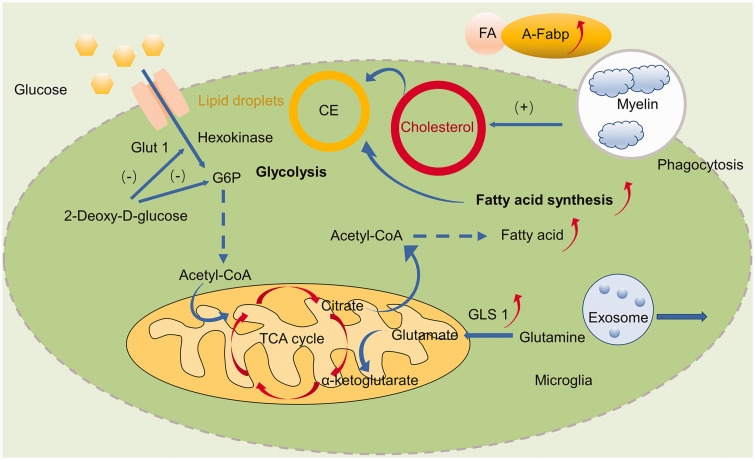Figure 4.
Microglia metabolic reprogramming and related signaling pathways after stroke. Ischemic stroke elicits metabolic profile changes which could affect the phagocytosis of microglia, including increased glycolysis and down-regulated OXPHOS. 2-Deoxy-D-glucose, an inhibitor of hexokinase and G6P could induce microglial phagocytosis and protect against ischemic brain injury. Both circulating and cerebral A-FABP, a lipid chaperone transporting free fatty acids, from microglia was increased. Fatty acid synthesis was increased due to glucose deprivation and phagocytosis of cellular membranes and myelin, leading to the accumulation of cholesterol and lipid droplets. GLS1, an enzyme that catalyzes the hydrolysis of glutamine to produce glutamate, induces pro-inflammatory response and exosome release of microglia. GLUT1, glucose transporter type 1; G6P, glucose 6-phosphate; TCA, tricarboxylic acid cycle; Acetyl-CoA-acetyl, coenzyme A; CE, Cholesteryl esters; FA, Fatty acids; GLS1, glutaminase 1; A-FABP, adipocyte fatty acid-binding protein; OXPHOS, oxidative phosphorylation.

